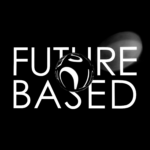This work was submitted by Noam Youngrak Son. The opinions and conclusions expressed in it do not necessarily constitute those of the Future Based platform. All rights reserved to the author. Do you have a thesis, a dissertation, or any other kind of research that is gathering dust on a shelf? Would you like to submit your work to our database? Get in touch!
Note:
In order to thank bats that provided a critical perspective for this text, the illustrations are translated into a format that is more readable for their sensory organs. Bats usually have low vision, but they can sense three-dimensional shapes using echolocation.
It’s been more than a week since I wrote the following stream of consciousness. Back then, I described the increase from one to 82 as a “soar”. I realize the word is more suitable to be used now when there are 4,34 cases of infection and 434 deaths from the coronavirus in the Netherlands. It reshaped my/our reality rapidly and drastically. What we’re going through is a fiction seen from the past. An experience of living in what I speculative about opens my eyes wider. I was lucky enough to stay alone in my studio apartment and to maintain my life by working and studying remotely till now, yet I am aware that this fiction works more apocalyptically to a lot of people, which I am deeply sorry about. Under those circumstances, Skype and Zoom Are the most intimate inter-human communication channels allowed for me now. My stories cannot be perceived without being heard and retold by the digital apparatuses around me. You may empathize with me through my webcam, my microphone, or by thinking about this text after reading it. Likewise, I believe that we should keep trying to become a bat, to sense through a bacterial membrane protein, and to think with viral RNA.

1.
I saw a video of Bear Grylls, so-called ‘adventurer’, violently hunting the bats in China, in a TV show called Man vs Wild. The muscular white man used smoke to repel bats from a cave and struck the fleeing bats with an improvised racket. Then he stomped on them, proudly showed off the struggling creature to the camera. The video appears to be very symbolic since the main event of the video is an expression of the power relation between the subject, Bear Grylls, and the object, bats. There are multiple elements that distinguish Bear Grylls from the bats: Bear Grylls or Bat, Man or Wild, Healthy looking or Seemingly disease-carrying, White or Non-white, Male or Not specifically male, Modern or Uncivilized. And I read the news to discover those elements don’t only set Bear Grylls and the bats apart, but also Bear Grylls and myself.
The coronavirus outbreak that occurred as the new decade starts in 2020 happened to surface in China, purportedly transferred from bats, through a few intermediate hosts that are as of yet unknown. The mere association between China and the virus aligned with the racist power structure that is already predominant in the Euro-America-centric worldview, fueled the expressions of racism, from hate speeches to violent assaults. The virus is real, but how we perceive the outbreak is based on a myth. Did it originate from wild bats? snakes? Chinese people? or a South Korean person that is writing this paragraph? All of those non-white beings are assimilated and accused as virus carriers, regardless of whether it’s scientifically backed up or not. The difference between the bats captured in Wuhan and a 24-year-old east Asian tax consultant can be easily overlooked, for example by Bear Grylls. I am their bats, not in a physiological, but in a cognitive sense.
One question arises here. Can I really become a bat and make the myth come true? I briefly speculated about myself physically becoming a bat, a scary virus reservoir. Then I started investigating how realistic that is. One thing that I noticed during the research is that I, as a human, share a lot of traits with bats. And those characteristics produce a natural susceptibility to viruses. They generally live together in groups called colonies, which can contain from 100 to several thousand bats, and I’m at an art school with over 700 students. Some bats may fly up to 50 kilometers to find food during their nightly journeys, and I traveled 123.4km from Eindhoven to Amsterdam yesterday. Bats have long lifespans between 20 and 40 years, and I assume I will live longer than that. Seen from the perspective of viruses looking for a cell to reside and reproduce in, I am not too distinct from bats, though I haven’t done my best to become a bat yet. Not only I share these qualities with bats, but the rest of the members of our species do too. While Bear Grylls puts the other Asian-looking people and me in the same category with bats, the virus does not discriminate between me, Bear Grylls, and bats.
What can we learn from those contrasting perspectives? How can I stay sane without falling into deep pessimism, while being seen as a bat from Bear Grylls’ perspective, and being treated like Bear Grylls by the angry virus? While writing this paragraph, the first COVID-19 infection in the Netherlands was found in Tilburg. What I could only do that night was to log in to Facebook and scroll down infinitely, seeking reassurance that I’m not the only person who was feeling lost. My newsfeed was full of opinions from various people. Most of those were backed up by numbers and scientific terms, though the conclusions were almost always not in the range of scientific facts anymore. Individual opinions were very certain, but by having 736 people (the amount of Facebook friends I have) exclaiming their ideas on a public platform, I could see a lot of contrasting opinions on subjects like wearing a mask, whether the virus originated from the seafood market, if the outbreak will last long, if they should postpone Salon del Mobile, etc. In many cases, the contradictions were extended to political dichotomies so that seven hundred sixty thousand people signed up for a petition to ban Chinese people entering South Korea, while a few provinces in China started restricting entries from South Korea.
In his essay “What is it like to be a bat?” philosopher Thomas Nagel writes: “Our own experience provides the basic material for our imagination, whose range is therefore limited. It will not help to try to imagine that one has webbing on one’s arm, which enables one to fly around at dusk and dawn catching insects in one’s mouth; that one has very poor vision, and perceives the surrounding world by a system of reflected high-frequency sound signals; and that one spends the day hanging upside down by one’s feet in an attic. In so far as I can imagine this (which is not very far), it tells me only what it would be like for me to behave as a bat behaves. But that is not the question. I want to know what it is like for a bat to be a bat. Yet if I try to imagine this, I am restricted to the resource of my own mind, and those resources are inadequate to the task.” Let’s say a racist who blames Asians for the spread of the epidemic wants to put themself in the virus’s shoes. Though trying their best to become a virus, their ways of empathizing will be limited by their preconceived racist ideas, and they may end up just becoming a virus that is selectively infecting Asians. Likewise, my Facebook friends use science-coated language and describe how the virus behaves, but they never overcome being “restricted to the resource of their own mind”. The virus, in both cases, is nothing more than an instrument to support people’s political theories that they already have. By writing this essay, I am also exploiting the COVID-19 outbreak to elaborate on my political ideas. I acknowledge that I’m not an exception to this.
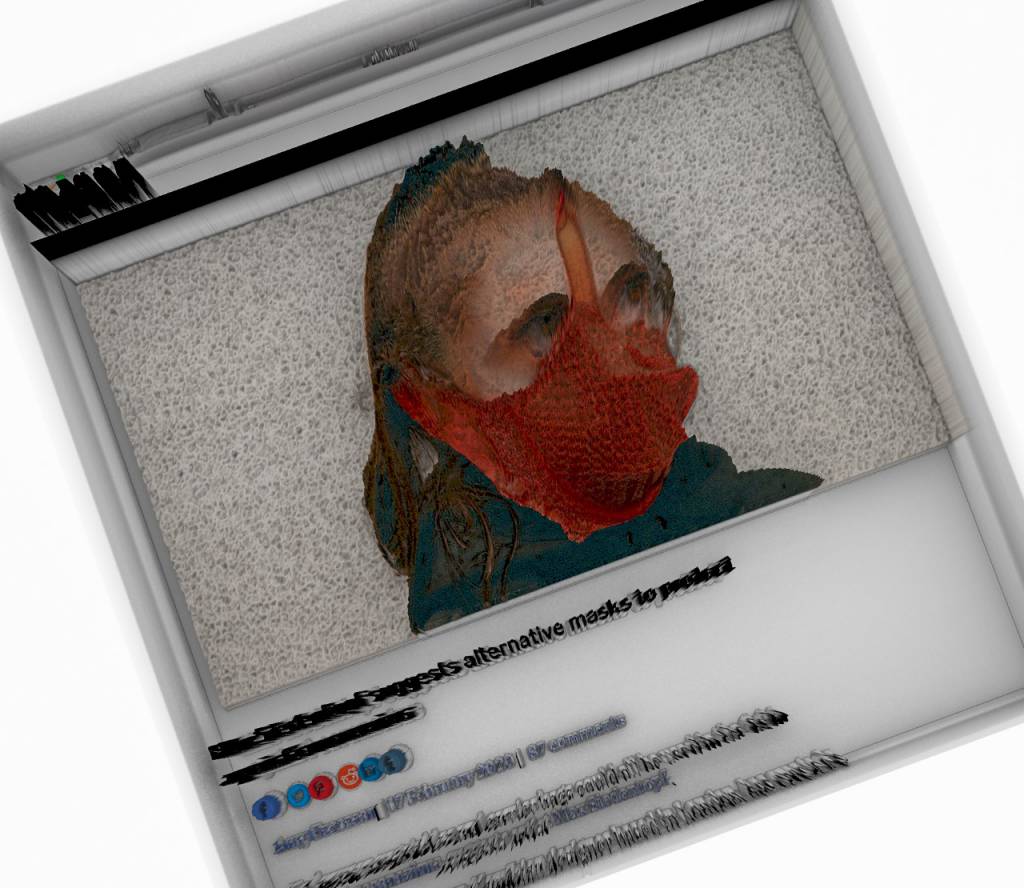
It’s not a coincidence that COVID-19 is one of the first global epidemics after the rise of the attention economy. The more clicks you get, the more money, votes, etc. you will earn. The outbreak as a topic is a very appealing packaging for whatever content. Not only my Facebook friends, but also more influential initiatives make use of this. Dezeen, one of the biggest online design news outlets in Europe, posted about a wearable virus-filtering shield and alternative face masks made of lettuce and bras created by opportunist artists. They used the hashtag #coronavirus to harvest more clicks. The opposing party blames the ruling party for the failure of their preventative measures. These tactics are often accompanied by the conventional methods of media spectacle to amplify the sensation it conveys. It consequently brings the sensationalization of the outbreak itself. Inflated with terrifying images, soaring graphs and unidentified stories, the fear generated by the virus spreads faster than the virus itself. Empty shelves at Toronto Costco as a result of panic buying and long lines of people for retrieving face masks in South Korea are exemplary instances of realities shaped by the online-amplified fear.
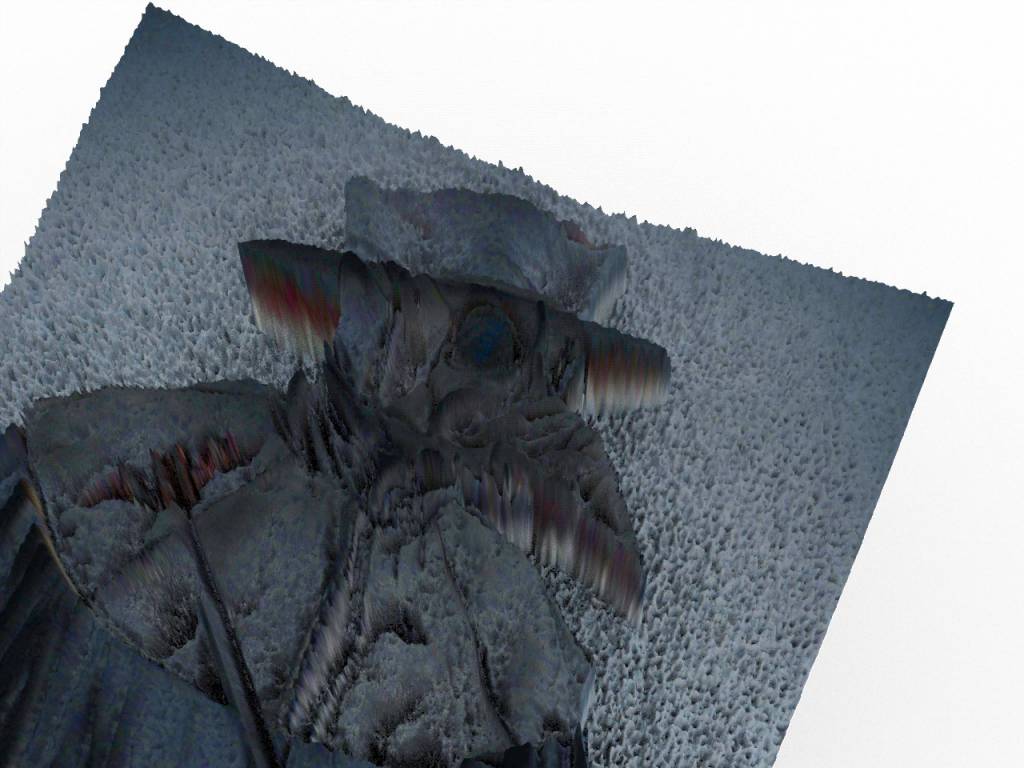
Face masks obtain multiple dimensions of meaning regarding the semiotics of fear in this context. According to the Centers for Disease Control and Prevention (CDC), wearing surgical masks won’t protect wearers from inhaling droplets, and they even don’t recommend N95 respirator, a special type of mask that blocks 95% of very small (0.3 micron) particles, except for health care workers. Of course, one can cast doubt on CDC’s statements. Regardless of which you may support between two contrasting opinions on the effectiveness of face masks, we’re inevitably myth-believers. These myths are not new, reflecting on the bird-like beak masks worn by plague doctors in the era of the Black Death. Besides the endless discussion about whether face masks will protect you, I am more interested in the communicative functions of face masks. Wearing a mask is a public portrayal of being sick. At the same time, it’s a display of having a fear of being sick. So, on the one hand, my parents are texting me very often these days promoting to buy and wear mask, but on the other hand, wearing a mask in public spaces here is an open acknowledgment of one’s own disease, which keeps me away from wearing a mask especially considering the threats of hate crimes towards Asians. Coronavirus, particles of RNA wrapped in protein, may not make any political decision by itself, whereas the myth that it creates is judgmental and discriminating. It’s more hostile to certain groups of people. It’s about race like I’ve been describing. It’s also about class: Hyundai Motor factory in Ulsan, South Korea handed out N95 respirators only to their permanent workers, and surgical masks to temporary workers. It’s also about gender: Sex workers are the most vulnerable group of people in the current outbreak, both medically and economically. And we shut down the borders around them, individually by face masks, nationally by travel restrictions.
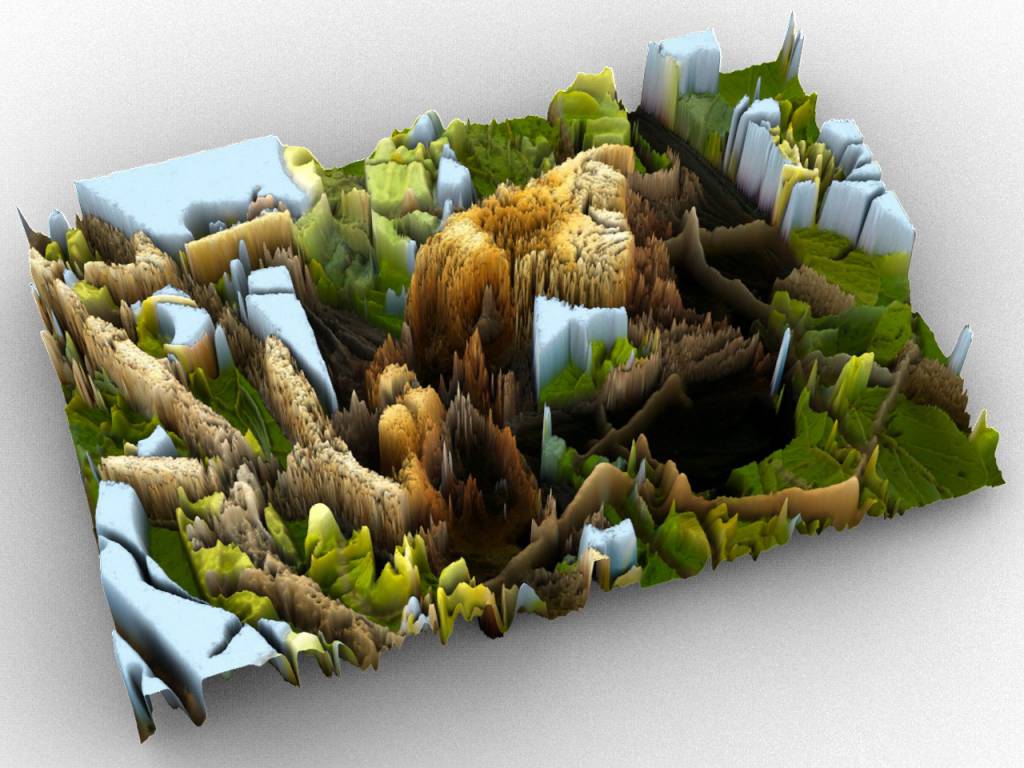
While our distribution of fear mainly happens via electronic signals and visual symbols, bats use highly complicated sounds to communicate multilayered information, possibly about fear. “No other mammals besides humans are able to use such complex vocal sequences to communicate” said Michael Smotherman, Texas A&M researcher studying vocal communication of Mexican Freetail bats. Yet our knowledge on the way it works is still very limited. Recent genetic studies have discovered that their vocal communicative ability is activated by the gene called FOXP2, which is also known to have a role in how people learn language. Despite these similarities, it requires a lot of patience to overcome the interspecies barrier and start understanding their language. The research done by neuroecologist Yossi Yovel and colleagues at Tel Aviv University is a beautiful example. They housed groups of bats in acoustically isolated chambers and monitored them with video cameras and microphones around-the-clock. The chamber was large enough to allow flight, and the bats were fed with a variety of local fruit. 75 days of continuous recordings of 22 bats yielded a dataset of 162,376 vocalizations. Nearly all of the communication calls were emitted during aggressive pairwise interactions, involving squabbling over food or perching locations and protesting against mating attempts. Though the communication calls signify not only one-dimensional information, they are often grouped into a single “agonistic” behavioral category in bioacoustics studies due to limitations of our auditory ability. To deal with this, the research team adopted a machine learning approach to categorize these vocalizations. They could eventually understand from which bat the vocalization was emitted, in which context it was made (squabbling over food for example), to which bat the vocalization is addressed, and eventually could predict the behavioral responses to the calls that the signal-receiving bat will make. To sum up, human beings empowered with an auditory prosthesis applied through machine learning could have a very brief understanding of how bats communicate by spending a huge amount of time and effort. In other words, non-bats, by the aid of nonorganic technological apparatuses, could begin to understand bats. The conversation between the researchers and Egyptian fruit bats is incomparably slower than the inter-device/human communication fueled by sensationalism and advertisements. The effort of understanding messages is treated as a scarce resource in the attention economy system. Having empathy for bats is considered as wasting money on unprofitable issues. I am sure that any Silicon Valley social media company, such as Facebook and Twitter, will run bankrupt if the communicative method on their platform is as inefficient as this. However, I can imagine that if our viral communication was as considerate as this beautifully intricate interspecies conversations, there wouldn’t have been a long queue for face masks, empty Costco shelves, pointless Dezeen articles, racist assaults and nationalist rages.
2.
Bill Gates, a former computer billionaire that somehow turned “Philanthropist”, yet another white man, was one of the opinion providers on COVID-19 that I saw on Facebook. He made a prediction that the virus is a “once-in-a-century” pathogen. It reminded me of another prediction that was widely believed to be made by him (but turned out were not his words), that “640KB memory on a computer is more than anyone will ever need”. My intuition was screaming to me that the forecast he made this time might be as wrong as the famous 640KB opinion. That made me question: “What if this pathogen is not ‘once-in-a-century’, but ‘constantly-in-a-century’?”, so that I cannot but live with COVID-19, as well as with bats and Bear Grylls and Bill Gates. Actually, we have been sharing the planet with coronaviruses quite peacefully for a long time, haven’t gotten in each other’s way. They have been with us for over ten thousand years since their most recent common ancestor has been placed at around 8000 BCE. They have been interacting only with non-human animals, namely bats, before human coronavirus emerged in the 1950s. Now they are believed to cause a significant proportion of all common colds in adults and children. Humankind’s encounter with coronaviruses is a relatively modern incident. It is only since the start of the 21st century that they have been causing outbreaks. The outbreak that we’re experiencing by the start of the current decade is one of the first few clashes that we (humankind and coronaviruses) have had. If this level of dramatic interactions is prolonged, will it cause us to go extinct? Or are we going to be able to sustain ourselves by making evolutionary compromises? What defines our species could be adjusted toward a direction that makes us more livable with COVID-19. I would call it a negotiation between humans and the virus. If so, what should we put on the negotiation table?
I’m not a biologist. Therefore, I warn readers against understanding the question, whether COVID-19 is not a “once-in-a-century”, but a “constantly-in-a-century” virus, as a scientific hypothesis, but I’m a designer whose job it is to create myths. Let the narratives that this question creates contradict our biology textbooks for once. Though the question itself earnestly references biology, to speak like Bruno Latour, I believe it’s not in the range of Science (singular and capitalized) but sciences. I came across a story about Agta, a group of modern hunter-gatherers in the Philippines, from the introduction text written by Donna Haraway for Ursula K. Le Guin’s little book “The Carrier Bag Theory of Fiction”. People in this community “value storytellers over all other kinds of people, no matter how useful and functional other sorts of persons might be in their society”. My survival strategy to deal with the helplessness is to create valuable stories about the virus outbreak, like what Agta storytellers did.
To start answering the question that I have raised in the previous paragraph, I would like to return to bats since they have been successfully coexisting with the viruses for a long time fueling the viruses’ evolution. One of the reasons that bats can host numerous viruses without suffering from diseases is their ability to limit inflammatory responses. Instead of having an immediate response that sometimes damages one’s own body to eradicate the virus, bats choose to dampen inflammation and tolerate the viruses. In the scenario where we have to live with the coronavirus pandemic, I see learning tolerance from bats as one of the evolutionary tactics that we may adopt. Living together starts by tolerating each other.
However, mere toleration is the most passive form of living together. More active ways of coexisting can sometimes lead to a creative outcome. Bacteria have been living with bacteriophages, a type of virus that infects and replicates within bacteria. Some phage injects its DNA into host DNA and has its DNA replicated along with the host DNA. This relationship is generally harmless for the host cell and even may benefit the host by adding new functions to the bacterial genome. On the other hand, some other phage injects its DNA into the host cell, degrades the host’s DNA, hijacks the rest of the cell, reproduces itself, and eventually dissolves the host bacteria. To prevent this, most of the bacteria species developed an immune system called CRISPR-Cas9. Bacteria store DNA sequences from the bacteriophages that had infected them before in their DNA. We call these genetic sequences CRISPR (clustered regularly interspaced short palindromic repeats). The Cas9 enzyme in bacteria references this genetic information to detect and cut phage DNA to prevent them from being reproduced. CRISPR-Cas9 is a coevolutionary invention of host bacteria and viruses that have been possible by a long-term accumulated phage–bacterium arms race. This ingenious system, being referenced by our genetic engineering technique, allowed us to edit genes more conveniently than ever. It enabled the scientist He Jiankui to edit the genetic makeup of twin girls illegally in 2018. The babies were the world’s first gene-edited babies, and the scientist was sentenced to 3 years in jail for conducting “illegal medical practices”. I’m not, however, going to write about why this incident is a moral disaster. Nevertheless, this technology that already started genetically reforming our species essentially originated from bacteria and bacteriophages that happened to live with unwanted others. The unexpected invention was possible because they admitted the existence of each other and dynamically coevolved rather than merely tolerating each other.

When this co-operation continues jumping over the interspecies barrier, the boundary becomes more ambiguous and permeable, and eventually dissolves. We have already had an existential benefit from this relationship since our cells started Mitochondrial respiration. The mitochondrion, an organelle that synthesizes ATP, a source of chemical energy used in most of the metabolic processes in eukaryotic cells, is believed to originiate from a prokaryote integrated into the proto-eukaryote. Our great ancestor’s single-celled body that relied on ATP-synthesizing bacteria for food ultimately embraced the bacteria that later became the mitochondrion. Our complicated and energy-intensive metabolism would never have been possible without this symbiosis. Mitochondria still reproduce independently in our cells with their own DNA and only inherited maternally so that it is widely used to trace maternal lineages genetically. We all already have an embodied experience of forming an endosymbiotic relationship with bacteria. Why not form a similar relationship with COVID-19? What can we offer them, and what can they offer us? I haven’t asked them yet so that I am not very sure about their possible offers. Still, as a human being, I am willing to offer them a few of my ribosomes so that they can produce protein, some enzymes such as RNA polymerase if they want, a part of my ER membrane they can envelop themselves in, Golgi vesicles in case they want to be transported out. If they pirate those from me, we call it a case of coronavirus infection, but if I provide it for them, we could frame it differently. Let’s see what they put on the table in response and how it forms our relationship. Perhaps we’ve been doing it with some viruses already for a long time since retrovirus-originated-DNA comprises up to 5–8% of the human genome. If we manage to “become with” COVID-19, how will it reform us and the way that we live? Will it shorten the queue for face masks in South Korea? Will it prevent racist assaults in Europe? Will Dezeen keep posting naive artworks with hashtag #coronavirus? Will Bear Grylls continue striking bats?
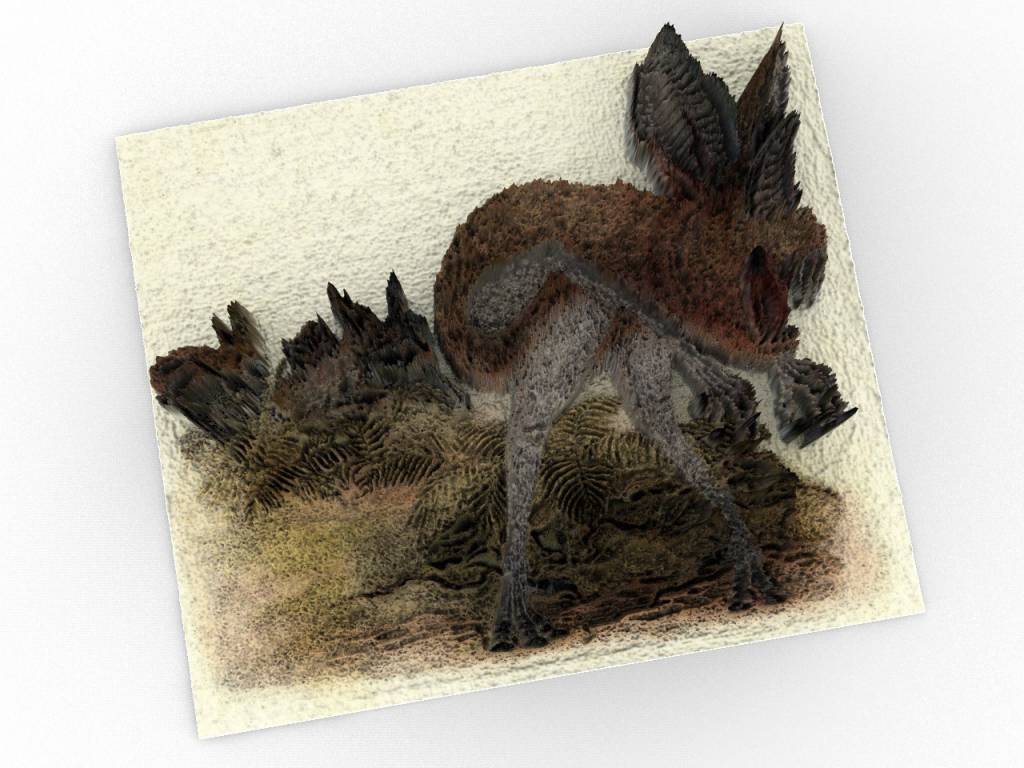
Yet not being sure about what future-us will look like, there’s a human that speculated about future bats that Bear Grylls would not dare to hunt. Dougal Dixon speculates about the animal species after the extinction of human beings in his fiction “After Man: A Zoology of the Future”. He proposes the Night Stalkers, the large, ferocious, pack-hunting, flightless leaf-nosed bats. At least in this fiction, the power once seized by Bear Grylls in the 21st century is taken by the bats that he was hunting. The unwelcome virus reservoir at the bottom of the power structure became a mighty predator at the peak. Would the bat-borne virus by then still connote the same as it does now? Maybe bats’ susceptibility and tolerance to infection could be considered prestigious in the fictional society. Viruses could work as a status symbol, and having an elegant immune system could be a form of social habitus among the political non-human beings that will emerge after our demise. Or, more fundamentally, viruses could be the currencies that construct the economic system of this fiction. Perhaps that could not only be the story after our demise because the development of financial technology has been driving money into more embodied forms, from cash to smartphone to wearable and eventually to implantable chips. The virus could be our next money. Nevertheless, giving a twist to the Bear Grylls-bat dichotomy, such as Dougal Dixon’s approach, stirs up the social meaning of carrying viruses, and in the crack that the twist makes, possibilities for more imagination emerge.
To conclude, I acknowledge that most of the speculations that I discussed in the previous paragraph won’t occur within the timeframe of the generation of people that are able to access this text. Extinction or coevolution doesn’t happen in one day. Whereas in the days that I have to live through, people are dying, Asians are being assaulted, Medical services are only for those who can afford them, and Bear Grylls hunts bats. I could not do anything other than writing this text about it. I started writing this when the first case of COVID-19 infection was reported in the Netherlands, and now it soared to 82, including a few from the small city where I live. This text is a written trace of my fictional thinking to fight the fear, helplessness, and anger about the political stupidity that the outbreak unveiled. I want this text to be read by more people who may have felt the same. I want them to take my point of view and enlarge it in their own way. Please deconstruct, rebuild, appropriate, misuse my stories. Let’s see where this collective therapeutic act of speculation brings us.
More information? Visit Noam Youngrak Son’s site. : https://www.d-act.org/
Text edit: Kees Muller.
